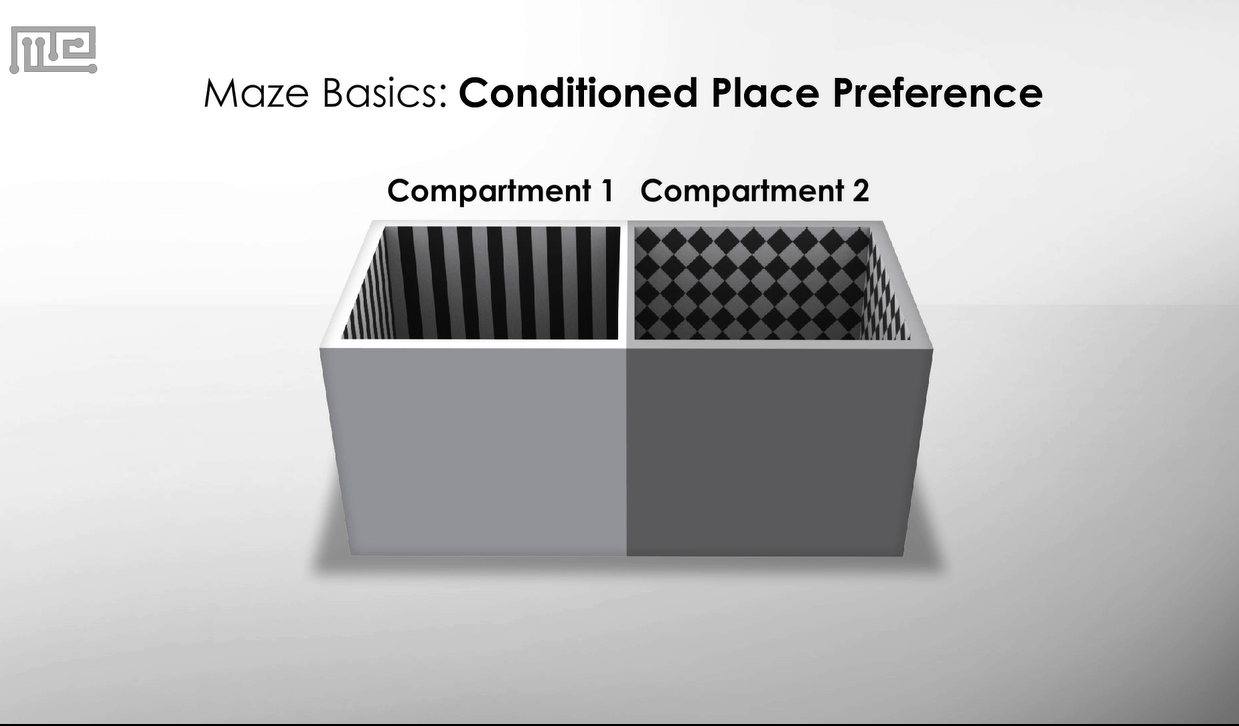The conditioned place preference chamber is a paradigm widely used to explore the effects of natural and pharmacological stimuli, taking advantage of learned associations. Learned associations are the pairings between two stimuli. In the classic case of Pavlov’s dogs, his dogs would salivate in response to seeing food. Pavlov realized that his dogs would salivate whenever he would enter the room, because they associated him entering the room with the food. Then, Pavlov conditioned the dogs to expect food whenever they heard a bell. Soon enough, they would salivate whenever they heard the bell ring, even when the food wasn’t presented.
In this situation, the bell is called the conditioned stimulus (CS), the food is the unconditioned stimulus (UCS), and the salivation is both the conditioned response (CR) and unconditioned response (UCR), depending on which stimulus it is in response to.
Now that we’ve covered the basics of learned associations, let’s see how it plays a part in the conditioned place preference test. The chamber for the conditioned place preference test is typically two compartments connected by a doorway or a smaller connecting chamber. Each compartment has a different cue. Commonly, cues are different visual or tactile clues, such as different patterns on the walls. Cues can also include different textures on the floor or even different olfactory cues.
Animals are administered a drug (or can undergo a change in physiological state), which is paired with one of the environments. If the animal creates a learned association, then it will respond to the environment with the effects of the drug. For example, cocaine is a drug of addiction. If the rodent is given cocaine while in one chamber, and only a vehicle (a control dose of a neutral solution) in the other chamber, the rodent will tend to prefer the chamber that it was given cocaine in. This would be considered a conditioned place preference (CPP). On the other hand, if the rodent was given lithium chloride, which produces aversive effects, it will want to avoid the chamber that it associates with lithium chloride, producing a conditioned place aversion (CPA).
Because of this setup, researchers have used this paradigm extensively to test the effects of a wide variety of drugs. In addition, researchers have tested how lesions to the brain can affect the responses to those drugs. Here’s some sample data. Let’s say we wanted to test the effects of two different antidepressant drugs, citalopram and bupropion.

In comparing it with a sham control, one may find that one drug can produce a conditioned place aversion, whereas the other can create a conditioned place preference. Results like these are important when considering which types of drugs to give patients, and how they might respond to these drugs, making this paradigm a very valuable test.
There are some limitations with this test, however, primarily the problem of not knowing exactly what is being evaluated. It could be, instead of a preference or aversion, that the drugs are affecting locomotion vs. sedation. If a drug happens to increase activity, it could be that the animal goes to explore the drug-paired environment more. The drugs could also make the drug-paired compartment seem more novel, so the animal will want to explore that more.
Overall, the conditioned place preference test is a very popular method for looking at the effects of drugs and other physiological changes. For more information on the design, types of drugs tested, and strengths and limitations, make sure to check out our portfolio: Conditioned Place Preference.

